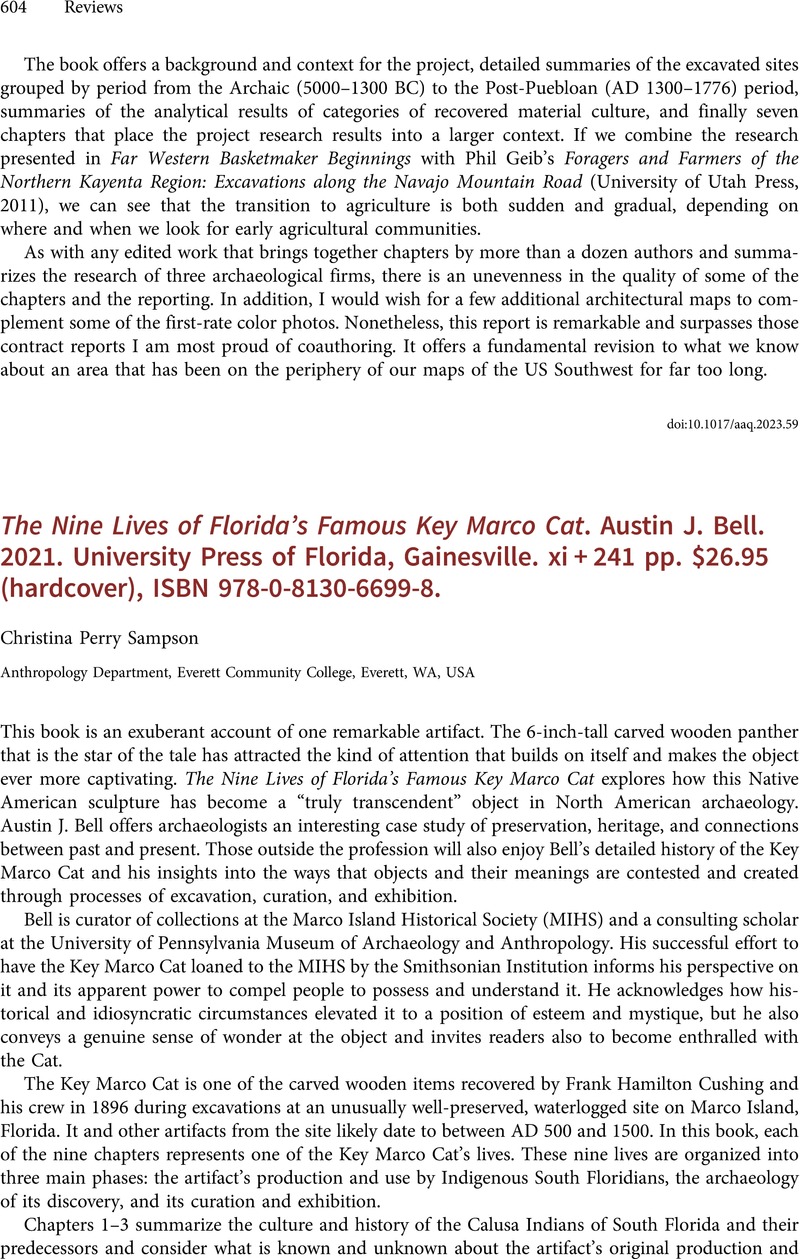No CrossRef data available.
Article contents
The Nine Lives of Florida's Famous Key Marco Cat. Austin J. Bell. 2021. University Press of Florida, Gainesville. xi + 241 pp. $26.95 (hardcover), ISBN 978-0-8130-6699-8.
Review products
The Nine Lives of Florida's Famous Key Marco Cat. Austin J. Bell. 2021. University Press of Florida, Gainesville. xi + 241 pp. $26.95 (hardcover), ISBN 978-0-8130-6699-8.
Published online by Cambridge University Press: 07 September 2023
Abstract
An abstract is not available for this content so a preview has been provided. Please use the Get access link above for information on how to access this content.

- Type
- Review
- Information
- Copyright
- Copyright © The Author(s), 2023. Published by Cambridge University Press on behalf of the Society for American Archaeology


